How can we raise anti-racist leaders?
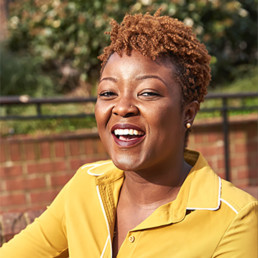
Written by Ayo Awotona
Ayo Awotona specializes in confidence building for girls in education. She does this through programs, workshops, and keynote speeches.
When it comes to speaking about race, white privilege, and colorism; things can often get a tad bit uncomfortable or even awkward, to say the least.
This is understandable. More often than not, these are difficult conversations for most people, and difficult conversations are often characterized by emotions such as fear, anger, frustration, conflict, and other strong dividing — not unifying — emotions. These emotions are often suppressed and can be released rather strongly.
Why is this?
It’s because emotions can run high on both sides, and there is room for the conversation to become quite heated on either or both sides.
This is just one perspective as to why uncomfortable conversations are hard.
So I hope that takes some pressure off of you depending on your curiosity as you first read the title to this blog post 🙂
So let’s dive into this simple (yet, rather complex) question.
How can we raise anti-racist leaders? That is, how can we empower our young people in the world today to make a change by first recognizing racism and challenging it in this seemingly never-ending cycle of systemic oppression?
Before I continue, I must add here that this question is not thrown out to one particular race. This is a question that’s being thrown to each and every one of us reading this (yes! Even me as a Black-British Nigerian woman), because the reality is… change starts with every single one of us. All races and denominations. Change looks different on each and every one of us – rather than a one-size-fits-all approach.
To kick us off with answering this question, it’s important for us to acknowledge/be reminded that children are not colorblind. Children are very much aware of racial differences.
Permit me to simplify how young children learn about race to:
- what they see (both directly and indirectly),
- what they hear, and;
- what they are taught (both at home and in school).
This is really encouraging because it means we (as educators and leaders) play a big role in positively influencing the trajectory of their lives.
Now let’s talk about developing an anti-racism strategy for our young people.
There are different ways to make a change so I’ll give 3 examples of practical things that can be done to help raise anti-racist leaders.
Behavioural Change
As leaders, we ought to know and lead ourselves before we lead others. This means we essentially can’t give what we don’t have. Here are some tips for being intentional about our own growth:
- Listen to other perspectives and de-center yourself
- Boost the voices of the marginalized
- Educate yourself
- Acknowledge your own privilege and propensity for unconscious bias
- Challenge discrimination, even when you feel scared
- Keep the conversation going
Raising Awareness
Sometimes, one of the most powerful things we can offer young people is awareness. This is where we’re focusing their attention on a cause or issue in the world (in this case, related to race). The objective is to increase their understanding – but of course, we must be in a position where we are practicing this ourselves.
Action Planning
A great way to empower young people to take charge of their own learning is through projects – whether this is through achieving tangible or intangible objectives. Action planning activities are designed to support students to build the necessary skills for work and life, as active local and global citizens.
So what could this look like?
Running a workshop where students come up with a project idea to take action on!
During the workshop and overall project duration, it’s important that we support students with their ideas, but steer them in the direction of what is realistic. It is important not to stamp out their creativity, but equally important to ensure students have a clear understanding of how their action plan can be S.M.A.R.T. (Specific. Measurable. Attainable. Relevant. Time-bound)
Some suggested questions to guide your students are:
- What issues do you see happening in your local community that make you upset/angry/you would like to change?
- What issues do you know of happening in your global community? Have you read or seen anything in the news recently?
- If you could change one thing in your local/global community, what would it be?
I strongly believe that for us to move in the right direction of raising anti-racist leaders, change starts with both you and me.
My name is Ayo, Ayo Awotona.
Let’s keep the conversation ALIVE!
The Psychology of Our Quarrels
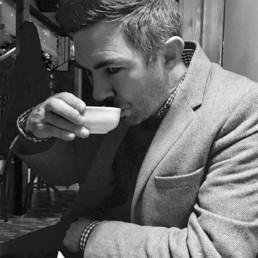
Written by Russell Ridgeway
Russell Ridgeway is an American writer based in Budapest, Hungary. He writes in business, tech, and fashion as well as creative fiction. You can reach him by email (russell@lensawork.com), or on LinkedIn and other social media platforms.
Quarrels do happen in our everyday relationships, with our family members, significant others, co-workers, and friends. Is it normal to have them regularly? What can we do about them? Do they have to be ongoing, or are there specific ways to reduce their frequency and intensity? Let’s take a closer look at this actual and significant topic, and find solutions that could work.
There are those types of people who avoid conflicts in contact, sometimes both parties. In other relationships, one person tends to fight more than the other, or the people keep changing roles. And it is becoming a pattern, which they cannot handle well, as the people involved are not sure what to do. No wonder why; we lack this kind of education!
How Quarrels Work
By observing, analyzing, and coming up with solutions to your quarrels, you can make your life better. Doesn’t matter who you usually fight with. This is what you, or more ideally, both of you should be doing. Realize that each of these scenarios has a starting point, a major phase with intense emotions, and a closing point. Why is this crucial to observe?
By doing so you can see some interesting patterns. Be it a relationship between married couples, parents and children, siblings, or co-workers, it always happens similarly! If you observe them, you can realize that there are only a few typical scenarios that keep repeating themselves. When the two (or more) of you start with the same words, actions, or things!!
Think of the analogy of a cup. Your cup is your relationship. When you fill into it a bit of a quarrel at times, it becomes fuller and fuller until it reaches its full capacity. That’s also the point when your relationship can’t take more at any one time, so it blows up!
How Do We Fight
You should take a piece of paper, and write down the following:
- How do you usually start fighting?
- What do you say to each other?
- How do you both feel?
List two of the most common types of your quarrels. Try looking at yourselves like someone neutral, an outsider. Remember, you don’t have to be one with your fight! Key points to consider: In what kinds of situations do they come up? How do we usually behave? What is the other saying that triggers us? How do we both react to each other?
Look for those situations in which these fights appear. Observe both of your moods consciously. Were you already under pressure because of other things? Were you tired? Did you sleep enough? Were you adding fuel to the fire just because the other person also hurt you? Did you try to consciously stop fighting, hurting the other’s feelings, or come to a solution?
You Are in Control
Did you allow the fight to take the best of you, feeling you are powerless? We often give away our power to the fight, when we should aim to do the opposite: disallow it to become ugly in the very beginning. Before expressing your pain, and thus hurting the other person, ask yourself to take it easy. Say to yourself, I am in control, not my pain. You should aim not to hurt the other.
Start to take control the earliest possible, before the quarrel gets big! This is the best way to alter its outcome to what you want it to be. Many times, what we say to the other person isn’t as hurtful as how we say it. When this happens, remember, that this won’t make your contact better and surely doesn’t lead to your desired outcome! When you start observing it, you are in control!
Fighting is like being in trance, we tend to lose our conscious behavior. Our survival mechanisms are turning on, switching off our intellect. So, what you need to do is, get yourself out of this state! Start moving if you were sitting earlier, go out into the fresh air, take some deep breaths, wash your face… Do the same with your feelings, switch them to positive ones! Remember who is the boss!!
Quarrels and fights are inevitable. Like it or not, they are a natural part of each human connection. Therefore, your aim should be to avoid them as much as possible. How? By reducing their frequency, strength, and length. If you strive to make them more and more temporary, and less significant each time, you create a win-win situation for everyone.
Think of things that the other person likes and be willing to give them that instead of what you like. Have a conversation to clarify each other’s needs before it is too late. If you want to make any of your relationships work.
Building Leadership Presence through Awareness of Self
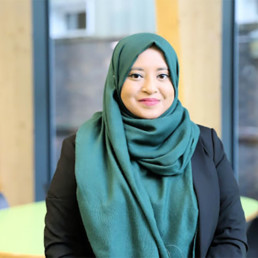
Written by Yamina Bibi
English Teacher and Assistant Headteacher
During the #WomenEd Global Unconference 2021, I spoke about how we can go about tackling our inner critic so that we can limit the influence of it on us as women.
I shared some specific strategies that have really helped me like labelling how I am feeling and seeking support from other women through coaching.
Despite presenting on this, I have really struggled this week to mute my unkind inner critic.
Having started as an AHT role in a new school this year, I have felt like a novice despite being a senior leader for a few years now. I guess in some ways I am because I am new to the system, rules and routines of the school. I know that it’s normal to feel this way but unfortunately this week I have been unable to soothe my inner critic, which tells me that I should be able to do this since I’ve done this job before. This negative self talk then creates a heaviness in my heart and mind and has even stopped me from sleeping well.
These are the unkind things that have played over and over again in my head:
‘You’ve been doing this for a while and you’re still not good.’
‘You can’t even teach properly so what makes you think you can lead?’
‘You were better as a classroom teacher instead of being SLT.’
Through coaching, I have been able to listen to this negative self talk and interrupt my tendency of letting it control me and all I do. I have learned to notice when I go from pressure to stress and acknowledge these thoughts and feelings. I have learned to notice when I am comparing myself to others and telling myself that I’m not good enough because they are better.
However, what I’ve really noticed is that when we’re on social media, it’s so easy to assume that everything and everyone else is doing better than us. It’s easy to believe that other teachers and leaders are superhuman experts who know all there is to know and can do everything and that, in comparison, we can’t do anything.
Let’s be honest. In schools, we are all working hard especially during these challenging times. We are all doing our best for our staff and students but no, we don’t know everything and it’s absolutely fine to say that.
As part of Resilient Leaders Elements™, we learn to share our strengths as well as our areas of development. I’ve been so afraid to do this in the past because I have feared that everyone would know what I knew about myself: I’m a fraud and failure. I now know that being open about my developmental needs with the people I trust and who support me does not make me a failure, it makes me an authentic leader.
Before RLE, I always thought I was an authentic leader but I realised that only allowing people to see my strengths and never sharing my struggles meant that others thought I was a superwoman. Maybe that’s what I wanted then but I definitely don’t want that anymore.
As leaders, we have a duty to model vulnerability and authenticity. True authentic leaders increase their leadership presence by modelling that we all have strengths and areas of development. In sharing this, hopefully others in our sphere of influence will do the same and then we can truly support them and their needs.
Alongside this, we must also pause, reflect and acknowledge our successes. Write it down, read it on paper and read it aloud to ourselves and others. What we are doing is so important and we cannot diminish that because our inner critic is telling us otherwise.
Let’s share all of who we are so that we can continue doing what we love without fear and that unkind inner critic holding us back.
Men, women and the rest of us: a brief guide to making university classrooms more accessible to trans and gender non-conforming students
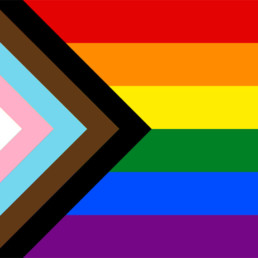
Written by Kit Heyam and Onni Gust
Onni Gust: Associate Professor of History, University of Nottingham. Author of Unhomely Empire: Whiteness and Belonging, c.1760-1830.Kit Heyam: Lecturer in Medieval and Early Modern Studies at Queen Mary, University of London, freelance trans awareness trainer, and queer public history activist.
This is a guide for academic teachers who want to get the best out of their trans and gender non-conforming students, and to ensure that they can fully participate in the classroom and in their studies.
1. Avoid making assumptions
Don’t assume you know a student’s gender based on body-type, voice or even dress. If they do disclose their trans status, don’t assume that they have or will undergo any form of medical transition; ask them how you can support them. All you really need to know is how to address them.
2. Names and pronouns are all you need
Names and pronouns are all you really need to know from your students. For trans and gender non-conforming students, the name, sex or title on their student record may be wrong. Using a student’s ‘old’ name may force them to come out, which can be incredibly distressing as well as violating the Equality Act. To avoid this:
Names:
- Instead of calling out the register, ask students to either write or say their names.
- Be up-front with students and ask them to see you, or email you, after class if for any reason their name has changed.
- Online platforms often automatically display names from University records. Familiarise yourself with your university’s name-changing processes – and if there aren’t any, insist that they be put in place.
Pronouns:
- Even if you think it’s obvious, explain to students how you like to be addressed. This models the process for all students and makes it much easier for trans and gender non-conforming students to state their own pronouns. Regardless of whether you’re trans or not, it also sends a powerful signal, showing you’re aware you can’t tell someone’s gender just from looking at them.
- If you ask students to introduce themselves to the class, give them the opportunity, but not the obligation, to include their pronouns.
- Gender-neutral pronouns, which some students will use, include the singular they/them/their; ze/hir/hirs; fae/faer/faers. The list is growing: if you’re unsure, ask the student to model the usage for you, or research it online.
- If you get a student’s pronoun wrong, apologise, correct yourself and move on.
3. What if other students constantly misgender a student in your class?
If a trans or gender non-conforming student brings this to your attention, it may be worth taking that student aside and talking to them. If, as a transgender teacher, I suspect that this is active transphobia, I would probably ask a cisgender colleague to intervene.
4. How else can I make learning more inclusive?
Consider your syllabus. It may be necessary to teach material that uses outdated/pejorative language, or ideas, about gender and sexuality (and/or race, class and disability). Flag up the problems, explain to your students why these texts are necessary to engage with, but make it clear that you do not support these ideas and that you invite critique.
Think about how you’ll manage any resulting questions or disagreements. How can you help your students to create a trans-inclusive seminar environment without making them feel overwhelmed, alienated or defensive?
5. Pastoral care for trans and gender non-conforming students
Awareness of trans and gender non-conforming identities is moving at a fast, but very uneven, pace. While your students will hopefully have support at home and at university, that’s still not the case for the majority. In a recent UCAS report, 17% of trans university applicants reported having had a bad experience at school or college, and trans applicants were less likely than LGB applicants to have good expectations for university. The report recommends that universities and colleges introduce bespoke resources to support trans students.
Trans people remain disproportionately affected by mental health problems.If your trans and gender non-conforming students disclose mental health problems to you, treat them as you would any other student, butbear in mind the following:
- Not enough counselors or GPs are trans-aware; some have been known to do more harm than good.
- Specialist gender services have waiting lists of over two years from referral by a GP.
If a student comes out to you as trans part-way through a semester:
- Think about your reaction: this is a vulnerable moment for the student. If you don’t understand something, ask politely and calmly for clarification.
- Don’t make any assumptions: trans people differ in their identities and their choices about social and/or medical transition.
- Let the student take the lead: support them if they want to come out to their class, but don’t force it.
Further resources:
For you:
UCAS, Next steps: What is the experience of LGBT+ students in education?
Equality Challenge Unit, Trans staff and students in HE and colleges: improving experiences
For trans and gender-nonconforming students:
GIRES (Gender Identity Research & Education Society – including a directory of support groups)
A New School Year. A More Inclusive School Year?
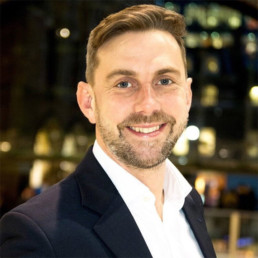
Written by Johan Jensen
Director of All-in Education. His consultancy work includes organisational development, leadership development, strategic communications, product development and diversity & inclusion strategy development.
In July 2020, I urged school leaders to be cautious. In the wake of George Floyd’s brutal murder and the global reactions to racism, I was approached by numerous education institutions who felt bewildered about what to do next. There was certainly a sense of anxiety. It was understandable that organisations wanted to do something and demonstrate activity. I told them, “If you panic into this work, you’ll soon see that you’ll panic out of it”. In my experience this still stands true.
Over the past year, the most powerful discussions that we have had with school leaders have been about self-reflection, especially how we relate and respond to difference in all its forms. The conclusion of most of those conversations is that when we take an honest look at ourselves and the people around us, we don’t like diversity. In fact, I’d go as far as saying that we are naturally geared towards repelling it. It’s called ‘homophily’, the love of same.
Achieving greater diversity and more inclusive schools requires purposeful self-reflection, critique and behaviour and systems change if we are even going to have a fighting chance to create the change that education still so desperately needs.
The majority of the schools, and groups of schools, we’ve worked with have really taken this to heart. It’s been challenging for them. They’ve had to confront uncomfortable truths about themselves and the institutions they’re responsible for. But, they’ve seen how this won’t serve the purpose of creating the next generation of leaders, followers and members of society. This is ground-breaking stuff.
The schools that our team has worked with have taken the first step in this journey, which is to listen. Listening to staff, students and alumni about their experience of belonging, psychological safety, diversity and inclusion. By supporting the senior leaders through coaching, they’ve been able to really listen to what their peers, staff, pupils and former pupils are experiencing and giving them the grounding for creating an even better experience and future.
The strategy that follows these first steps is long term and focuses on values, the business case for changing the way the school operates, the vision for what an inclusive school looks and feels like and how the institution will hold itself accountable in achieving this change.
Some schools have achieved incredible results, with one grammar school recruiting 80% non-white British staff in this year’s September intake. But, achieving greater diversity is only part of the puzzle, achieving inclusion is a totally different game.
How will you create an inclusive school?
We are delighted to be running with RSAcademics a free case study webinar on 13th October to share our experiences and those of some of our clients over the last year, and we look forward to seeing you there to help you continue your thinking on inclusivity.
Please sign up to the webinar here.
Empowering Our Students - Let’s Start With Their Names

Written by Anu Roy
Anu is a TeachFirst leadership Alumni and digital trustee and teacher committee lead for charities in England and Scotland. She is currently a digital curriculum development manager and works in inclusive education projects incorporating tech.
I remember as a quiet and nervous NQT attending a meeting where myself and other English staff would chat about our incoming Year 7 cohort. As we worked our way through the Excel spreadsheet, a joke started forming where a member of staff referred to a student as ‘Chaka Khan’- alluding to the famous singer who goes by the same name. It felt harmless and I am sure the intention was not to cause embarrassment or mock names, but it felt wrong regardless. I would know. I am sure this happened when I moved from India to Wolverhampton to start Year 7 in a predominantly white school.
I remember all too clearly squirming at the back of a classroom when a teacher confidently made their way through ‘Beth, Laura, Jess, Zoe’ and then the dreaded moment came closer. The teacher paused, squinted at the list with a frown on their face.
‘Ama?
Amu?
Anaaa…’
Now the girls in the room were sniggering. They glanced back at me quickly and I did my best to force a small, to laugh it off even though I felt so humiliated inside. Especially because at that very moment the teacher who could not pronounce
‘Ah-New-Rad-ha’ gave up altogether and said, ‘it’s too much for me. Can we just call you Annie?’.
To have my name, my Bengali name given to me by my grandfather- a name which means ‘goddess of the gods’- reduced so casually to a westernized format that would be comfortable and convenient for my white teacher set the tone for my experience of education that year in Wolverhampton. It made me squirm whenever attendance was taken, it made me hesitant to raise my hand despite being confident about my subject knowledge and eventually-it made me reluctant about going to school. I wanted to feel invisible, to blend into the classroom walls because I was not British enough, I did not feel valuable.
So fast forward 11 years and now I am the teacher. I am supposed to have more knowledge, more acceptance and confidence. However, in that meeting when this student had their name turned into a joke, I felt the same pangs of feeling small, feeling embarrassed on their behalf.
So I spoke up, “it’s actually Shah-kir. Shakir Khan”. This was followed by some nodding, an acknowledgement of the changed atmosphere in the room and we moved on quickly to the next student.
BAME students experience incidents like this every day and this must change. Here are some simple ways for educators to ensure this is avoided:
- Ask them exactly how you would like their name to be pronounced
- If you can, ask them where their name comes from. Many ethnic-minority names have symbolic religious and cultural meanings.
- Do not hesitate to correct colleagues who mispronounce a name in front of you if you are aware of the correct version
Our names are the blueprint of our identity. Let us ensure we honour this for our students.
Implementing Effective Flexible Working Practices Training for School Leaders
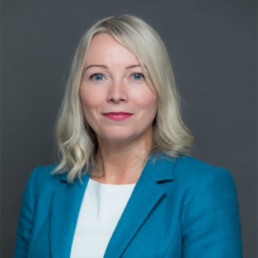
Written by Mandy Coalter
Mandy is the founder of Talent Architects, helping schools be great places to work. She is a published author and was named as one of the Top 10 most influential HR people. She is the former Director of People at United Learning.
Want to better promote inclusive working practices?
Getting more flexible working requests?
Wondering how to retain talent?
Want to enhance your ability to advise on new ways of working, how to adapt, as well as promoting staff wellbeing through flexible working practices?
Our sessions could be for you
The road to a flexible and agile workforce is more important now than ever before, especially in schools. Expanding opportunities for flexible working will be particularly important post-pandemic, where remote and hybrid working have become widespread in some sectors. Creating more scope for flexibility is possible in all roles in a school, promoting a better work-life balance, supporting the diversity and inclusion agenda and addressing the recruitment and retention issues in the sector. Join Timewise, the flexible working experts, and their panellists in a series of webinars, Q&As and drop-in clinics to learn more about what a proactive, whole-school approach is about, starting in October:
Webinar for Heads: Tuesday 05 October at 10am (90 minutes)
Register here https://bit.ly/3jR2pMk
Webinar for School Business Professionals/HR: Wednesday 06 October at 10am (90 minutes)
Register https://bit.ly/2Uc4hXp
Webinar for Governors & Trustees: Tuesday 12 October at 2pm (60 minutes)
Register here https://bit.ly/2VPlc2b
One Year Later: Lessons Learned from a Whole School Approach to Decolonising the Curriculum
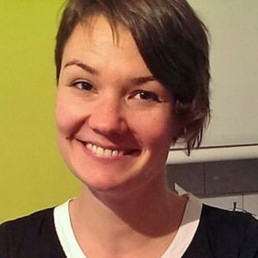
Written by Terra Glowach
Lead Practitioner for literacy and decolonising the curriculum at Cathedral Schools Trust in Bristol
After a year of working with teachers across the curriculum to decolonise, I’d like to pass on some key lessons for new EDI Leads, Curriculum Leads, Lead Practitioners and anyone trying to do similar work in schools.
Here are my top 10. Some of these I got right first try; others I learned the hard way. Hope it helps.
- General reading on the topic of anti-racism, decolonising, and education will give you the knowledge and confidence to have critical discussions, and wider frameworks for doing anti-racism work in schools will give you an idea of where to start. But the impactful work starts when you look at your specific school cohort, the data on ethnicity, outcomes and behaviour, and qualitative data on the experiences of Black and Asian staff and students. Know the specific and concrete issues in your institution. For my school, the issues were a lack of Black representation in the curriculum, the teaching staff, and in top sets. You can’t get people on board unless you can present the problem in cold hard numbers, and show that it’s in their immediate context.
- Seek out local academics who are working on decolonising and race equality within the Education faculty of your nearest universities first, and those passionate enough to work with schools even if they are not in the Education faculty. Teachers are disciplinary experts, researchers, community workers and curriculum designers, but rarely recognised as such. Organising discussions between subject leads and academics working in the same discipline to tackle what decolonising looks like in their subject gives teachers this recognition. Academics have often done their decades in school teaching, and can bring fresh research and challenging ideas to the table. Teachers, in turn, get to practice criticality in the face of research and work out what approach would work best for them in their context. My first go at providing readings for decolonising Maths didn’t stick because it necessitated the addition of history content which the teachers felt was forced. But Prof Alf Coles pointed out that decolonised pedagogy was a powerful way to both respect students’ ways of knowing and improve attainment. Get the experts in!
- Disrupt the school culture and curriculum by centering voices which have been previously marginalised. For example, I got Somali students to teach Somali to their teachers, and prepared form time materials, a whole-school assembly and a scheme of work on Somali contributions to UK communities and literature. Show people that the status quo can shift, and take the blinders off. You have to model decolonising work and show how it creates belonging, a more informed curriculum narrative, and a sense of excitement and discovery – THEN start getting people on board for work across the curriculum..
- If you are white, find the Black and Asian staff in school and the academics and practitioners out in the local community who have been doing this work longer than you and with a far better idea of how and why it should work. Put them forward for the opportunities and pay that you are offered but which they deserve, and watch them knock the dust off your school.
- Model what colonial frameworks and lenses look like in textbooks and in practice – have discussions about the limitations of these, how they position the global majority and the Global South, and the way they reproduce racial hierarchies. So for History, Science or Geography, is the seizure of land from indigineous peoples, the extraction of natural resources and the pollution of their land, air and water presented as an unfortunate but inevitable consequence of competitive capitalism and the discovery doctrine? Do you look at what established, indigenous science and resource management achieved and how this was exploited? Do you consider what fair trade and sustainable, mutual development might have looked like?
- Do form-time focus group and questionnaire research with the students so you promote discussion and give space for students to feed in anonymously. Use the collated data – like the percentage of students who want more Black representation – and powerful anecdotes from students as stimulus for planning. Go back to students with these plans , and check back after a term or a year to ask them how your school is doing. So often we ask for student voice and don’t keep students in the loop. Why not make them your associates?
- Staff need reading and training on how to talk about race, and how to structure and deliver a curriculum that empowers rather than silences, humiliates and traumatises. Just like students, they need to see this modelled in their own discipline (not just yours).
- Students at my school said effective discussion facilitation was key to challenging racist ideas in their curriculum and providing a safe space for people to explore and develop more informed opinions without ego or defensiveness getting in the way. If oracy and explorative discussion isn’t explicitly taught in your school’s classrooms, this may seriously hamper your progress.
- Show off and celebrate the work teachers have done to decolonise the curriculum in your school on a public forum. Think newspaper article, conference, festival, exhibition, trust-wide INSET day. They are leaders and change agents, and deserve recognition. It will also inspire the people waiting in the wings to join in and make a difference.
- You will soon realise that you have only scratched the surface, and that school priorities may change with the news cycle. This is unglamorous, thankless, difficult and ground-up work that has been going on for centuries. You are not a pioneer. Find and maintain your network – you will need each other.
The Important Role of the DEI Leader in Our Schools

Written by Hannah Wilson
Founder of Diverse Educators
In the wake of George Floyd’s murder last summer many people from my network started disclosing that they were feeling compromised – they had been approached to lead DEI in their context, but they knew it was because of their lived experience ie they identify as belonging to one of protected characteristic groups.
Each person shared how they felt the burden of responsibility but also that they were acutely aware of the visibility and the vulnerability of this position. Moreover, most of them had been asked to take on this role for free (ie for love and for passion). They were not being offered additional time, additional training nor additional money.
We created a DM group that soon filled up on Twitter so we created a 2nd one – nearly 100 people who are leaning into leading DEI work in their schools, colleges and trusts. It is notable that the vast majority of these individuals were assigned female at birth and identify as being women. Many have an intersectional identity and are women of colour, women of faith, women who are LGBTIA+ and women who are parents/ carers. An important factor to consider as we bang our drum about asking people to do this work (ie burden and additional load) for free.
In response, Angie Browne and I developed the DEI Leaders Programme to support each individual on their journey to combat the fear, to address the isolation and to create a safe space to explore the vulnerability of this important work. We have both led this work on our own career journeys and navigated the systemic, structural and societal barriers that come with the territory. We have stories to share and war wounds to lick, but we can also share how we shaped our strategies and illustrate the impact we had and the legacy we created.
In addition to the programme, through the #DiverseEd network I created a space each half-term for DEI leaders who are not formally working with us through the programme to come together informally to form a DEI Leaders Network as an opportunity to connect, to collaborate, to peer support and to share the learning. We are also planning an annual DEI Leaders conference to share best practice and deepen knowledge and understanding in June.
I have also begun to collate a recruitment pack of DEI leaders job descriptions, person specifications and adverts so that each individual can negotiate the framing of their role in their school/ trust. The title of the role is up for debate and varies from setting to setting. I share in my training sessions that a trend I have observed in my cross-sector LinkedIn network is that in corporate settings mande D&I/ EDI leads are now being called Head of Belonging. I love this reframe and personally think that the education sector should adopt it too.
It has been heartening to see a flurry of tweets in the last few months of people from our network and from our programme being formally appointed and properly remunerated for this role in our schools. Congratulations to those who have successfully been appointed and those who have negotiated a defined role. This is still the minority but there is a glimmer of hope that organisations are recognising the need for a defined role and remit for whoever is leading DEI.
Our provocation to the school system:
Would we ask a SENCO or a DSL to strategically lead their whole school responsibility without framing their role, giving them additional time, adequately resourcing their area (budget for books/ training) and elevating their sphere of influence to at the very least associate senior leadership?
For all of the schools leaning into DEI work we encourage you to review your infrastructure. The DSL and SENCO do not carry the burden of all of the safeguarding and all of the SEN work on their shoulders – they have a team of people they can distribute the load across, but moreover the collective responsibility of the whole staff team is expected. We believe that DEI needs to be framed in the same way.
We would not ask an adult who had been vulnerable to lead safeguarding based on their lived experience nor an adult with an additional need to lead SENCO without the framing, the training, the support and the accountability around them, once they had been identified as the most appropriate person to lead this work and fulfil the responsibilities of the role. So we should not be approaching the staff of colour, the staff who are LGBTQIA+ to do this work, simply because of their identity, and moreover we should not be asking them to do it without a formal process to identify they are the person who is best-positioned to lead this work, and thereby appointing them, announcing them and appropriately remunerating them.
The role of the DEI Leader in our schools is an important one as it embodies our commitment to this work, it elevates the status of the strategy, it creates visibility in the school of diverse role models, it amplifies the voices of diverse stakeholder groups and it centres belonging in the culture, the curriculum, the policies and the practices throughout the school.
So we need to be very careful that through our DEI strategies we are intentionally dismantling barriers instead of further perpetuating the glass ceilings, the concrete ceilings, the glass cliffs and the pay gaps that already exist in the school system. Formally appointing and remunerating the people leading this work is a great place to start as our schools continue on their journeys to unlearn and relearn why and how representation matters.
“I’m in hospital Liz.”
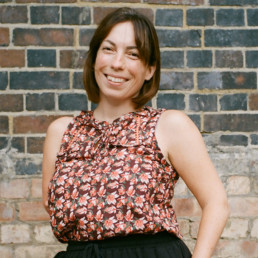
Written by Liz Wright
Elizabeth Wright FRSA is an editor, consultant, speaker, and activist. She brings forth all of her life experience to challenge people around disability, diversity, and inclusion.
I gulped at the message. It was from Jade, my graphic designer for Conscious Being and we were a week out from releasing issue 2. As a magazine editor, as a writer, as a speaker and consultant, I am so used to working to deadlines that my first thought was how are we going to get this issue out on time.
For years now I have been jumping to so many other people’s tunes, to doing everything possible to reach the needs of the client, without actually looking at and addressing my own needs. I am a disabled woman and live everyday with the effects of this identity. Tiredness from PMS, experiences of ableism, and using more energy than a non-disabled person to move my limb different body, is my reality every day, every month. Like a yoyo, my energy levels are unpredictable; my muscle pain is unpredictable. Everything I do, by default, is slower than someone with two hands and two legs. And yet, for years, I would push on, trying to keep up with my non-disabled peers.
In the past year I have decided that enough is enough when it comes to stretching my lovely body beyond its limits – all to please others who don’t know the actual lived experience of my impairment. Boundaries have been key to finding that sweet spot. Placing boundaries around my time and energy levels means that I am finding it a lot easier to say no to people and to stand up for myself in demanding that my needs be met too. The difference in myself has been astounding – I am more productive when working because I have had the rest that I need, I am more joyful, and dare I say it, interesting, because I actually make time to go places and see people. Life has blossomed as it hasn’t done in a very long time.
My activism has gone to the next level too – I am proud of my limb different body and what it has done for me and what I know it will do for me in the future. It has taught me many lessons and given me deep knowledge about the flaws in society and how we have to have structural and cultural change around work and success. My physical and mental fatigue wasn’t because of my impairment, it was because of the undue pressure that society puts on us to be productive and to ignore our very basic human needs to rest and relax.
When I started the magazine Conscious Being, a magazine by and for disabled women and non-binary people, I knew that I only wanted to hire other disabled creatives who deserved a platform and a space of their own. With as fair and equitable pay for these creatives as I could afford. I also knew that I wanted the core editorial and creative teams to feel that their health and wellbeing took precedence over anything else. I never wanted anyone to feel that they couldn’t tell me when they weren’t well and when they needed rest and a day off. I wanted Conscious Being to reflect the core of what I had learnt about taking care of myself – that when we look after and prioritise ourselves and our needs, that is when we can meet the needs of others in a beautiful and empathetic way.
Jade was in hospital and she wasn’t sure how long she would be in there for. As much as a slight panic hit my core first, that residual fear of not meeting deadlines, I knew that Jade’s health and wellbeing was more important than any release date of a magazine. And as Jade’s boss I told her so. I took hold of the reins, I assured her that we would work with her timings and that she had to just focus on recovery now. At the end of the day, disabled or not, we are only human, not machines. And as much as the world we live in would like you to believe that we don’t have a choice, unless your job deals in life and death situations, we can choose to push back deadlines, say no to things, and demand that our needs be met.
Issue 2 of Conscious Being came out on the 7th of September. A week late, but a much better magazine for it. The way the team pulled together and rallied around Jade was inspired. And the end result has been a happier and healthier graphic designer and a magazine and team that we can all be proud of.
—
We would like to thank Diverse Ed for being a sponsor of Conscious Being Magazine – the magazine by and for disabled women and non-binary people. If you would like to be a sponsor in the next issue please reach out to Editor-in-Chief Liz Wright at – liz@consciousbeingmagazine.com
You can grab your copy of issue 2 here – Conscious Being Magazine

